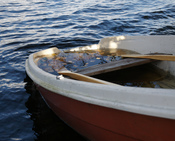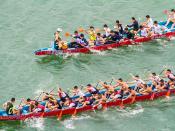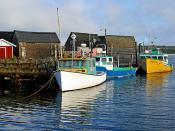Hydrodynamics of boats
Aim: To find out which hull shape and weight combination travels fastest through water.
Hypothesis: I believe that the V shaped hull will have the best hydrodynamics and will be quickest with the weight back.
Materials:
Balsa wood blocks
String
Timber
Plastic builders film
Sand paper
Marine Varnish
Running Block
Lead
Sinker weights
Method:
First I built a wave tank using 4 planks of timber and some plastic builder's film. I made the tank 2.5 meters long.
After I had done this I decided to create the propulsion system for the boats. This was a weight weighing 112g to be dropped from a tower to pull the boats forward.
The tower I built was 2.6 meters above the ground level. I did this to ensure there would be enough length to pull the boat the whole way.
The next step was making the boats. I used balsa wood as the hulls and used sand paper to shape them.
Once all the boats were shaped I waterproofed them using marine varnish. I made sure all the boats had equal weights at 66g.
Finally I filled the tank up with water and tied some string to the test boat and sinker weight ready for testing.
For the first test I tested each boat 3 times. For the second test I put the led weighing 50g at the front of the boat and tested each of them 3 times. For the third test I put the led at the back of the boat and tested them each 3 times.
Independent Variables:
The hull shape (V shaped, Catamaran, Flat bottom and Rounded).
Weight on the boat (Forward and back).
Dependant Variables:
The speed of the boats.
Controls:
Distance of test.
Water in tank.
Force that the boats are pulled by.
Results:
Time (secs) | No Weight | Weight Forward | Weight Back |
V Shape | 6.3 | 6.37 | 6.23 |
Catamaran | 6.07 | 5.97 | 7.23 |
Round Hull | 5.93 | 6.2 | 5.87 |
Flat Bottom | 6.47 | 6.9 | 7.73 |
Speed (m/s) | No Weight | Weight forward | Weight Back |
V Shape | 0.397 m/s | 0.393 m/s | 0.402 m/s |
Catamaran | 0.412 m/s | 0.418 m/s | 0.346 m/s |
Round Hull | 0.423 m/s | 0.403 m/s | 0.426 m/s |
Flat Bottom | 0.386 m/s | 0.363 m/s | 0.324 m/s |
Above is the graph showing the averages of each test. The quickest combination was the rounded hull with the weight back at 5.87 seconds. The slowest test combination was the flat bottom with the weight back. The V shape hull was very consistent with times of 6.3, 6.37 and 6.23. The rounded hull was also very consistent with times of 5.93, 6.2 and 5.87. The catamaran had two fast runs but when the weight was shifted back the time was stretched to 7.23. The flat bottom as expected was overall the slowest boat tested.
Discussion: As stated above the Flat bottom was the slowest boat overall. This is because there was more drag from this hull and it was not as streamlined compared to the others. The catamaran also had a slow run with the weight back. The catamaran was slow because the front of the boat was tilted up and the water was pushing against the flat bottom of the boat slowing it down. The V shaped hull was very quick as it could cut through the water with minimal drag and this is why it used in many boat designs. Finally the quickest hull overall was the round. This was because it had the least drag and the rounded bottom allowed water to easily pass. Although the V shaped hull with the weight back was quite quick it did not have the best hydrodynamics, so my hypothesis was wrong.
Conclusion: In conclusion the rounded hull had the best hydrodynamics and if I ever had to choose between hulls I would choose the rounded hull or the V shaped hull. As expected the flat bottom had the worst hydrodynamics and I will never be using it for any of my boats in the future. If I was ever considering designing a boat with a catamaran hull I would put the weight forward.
By Toby Burnell


